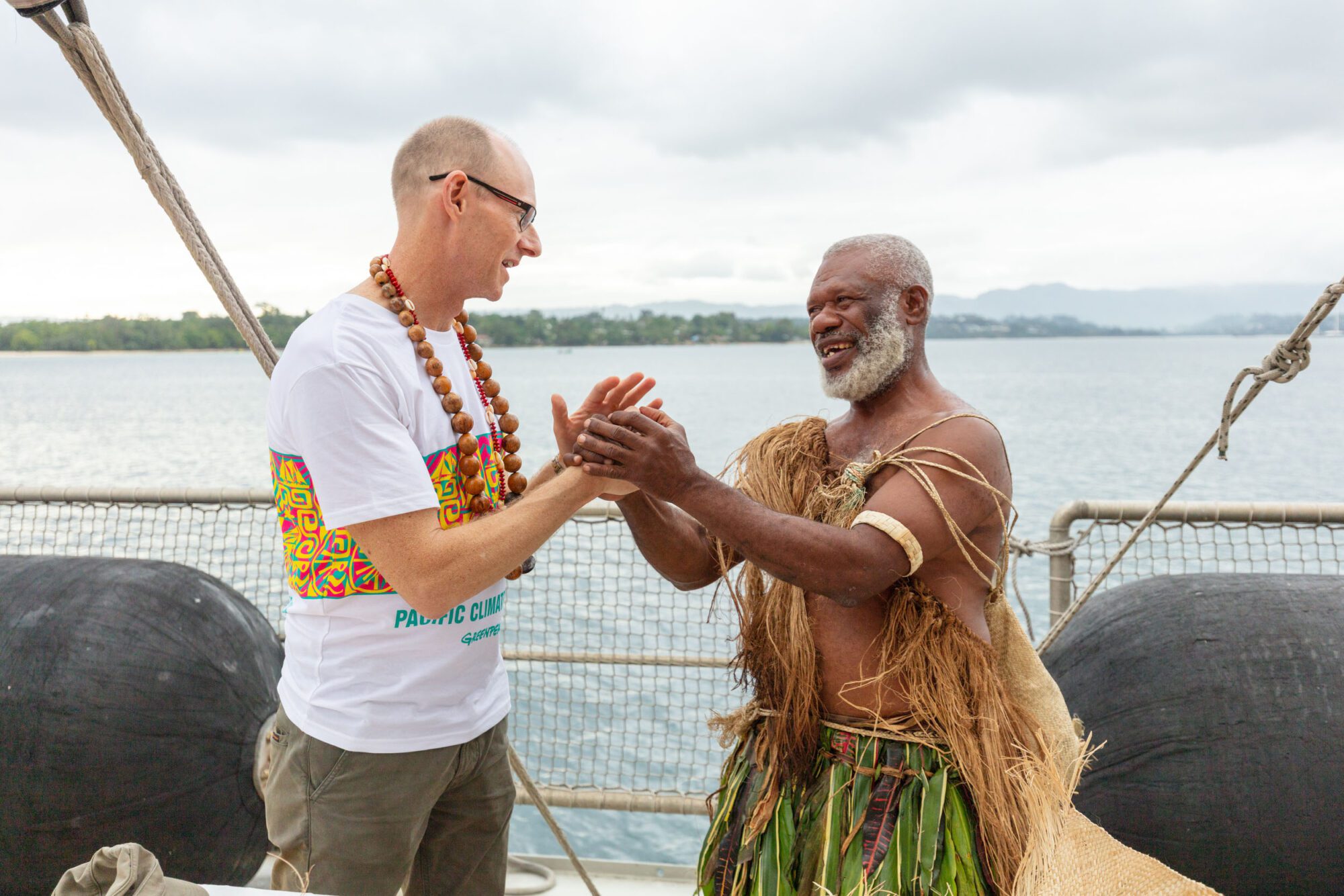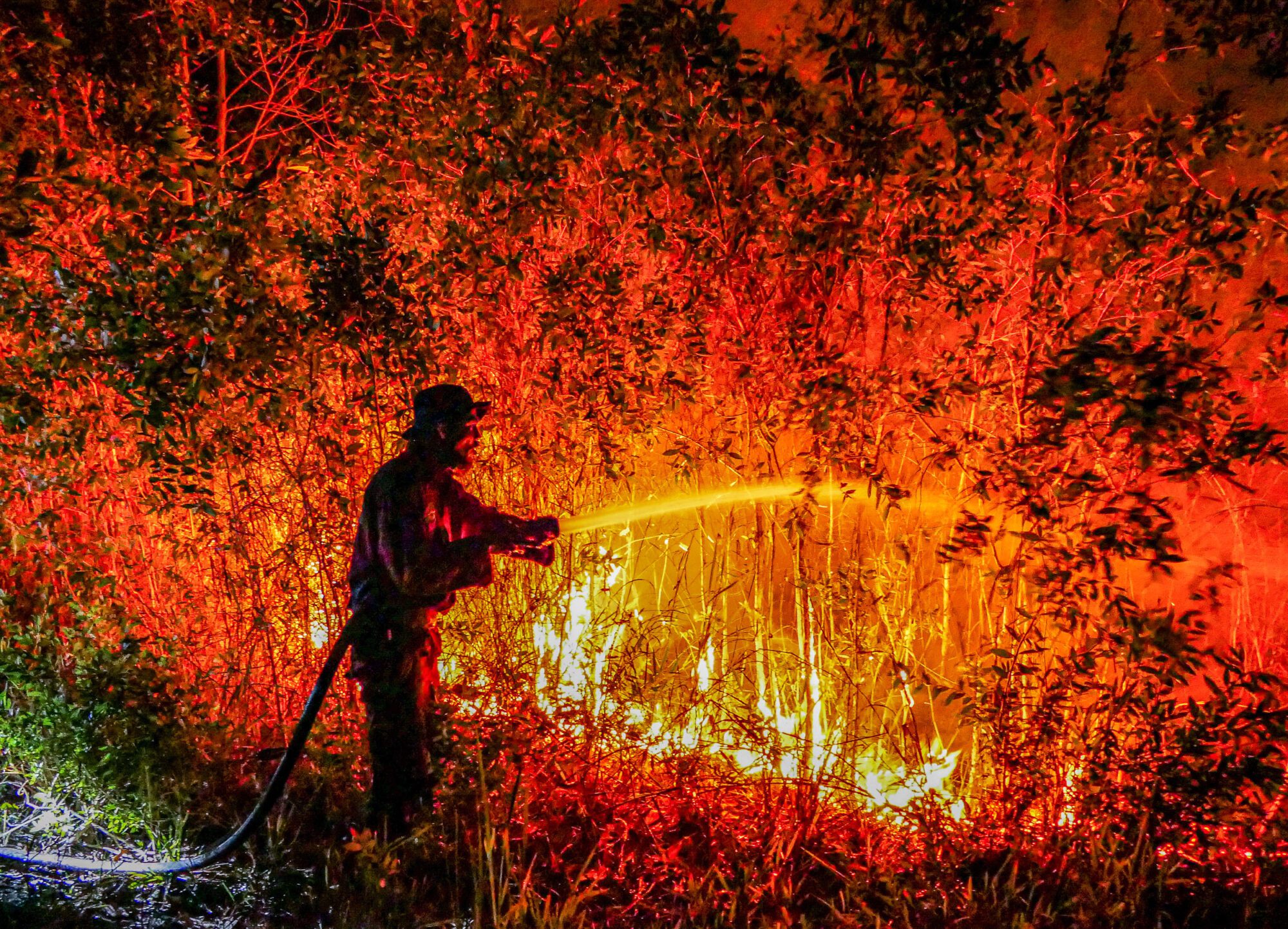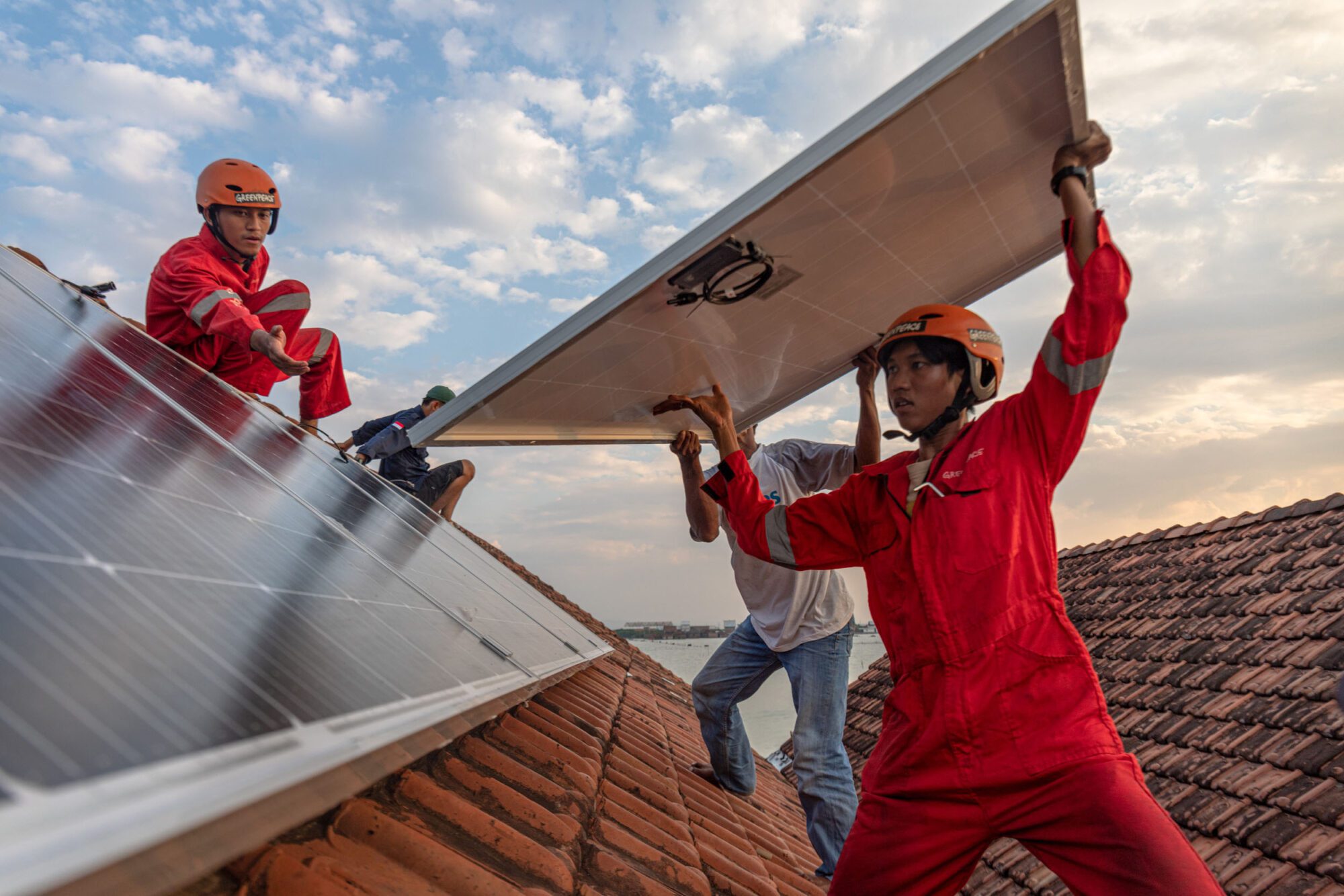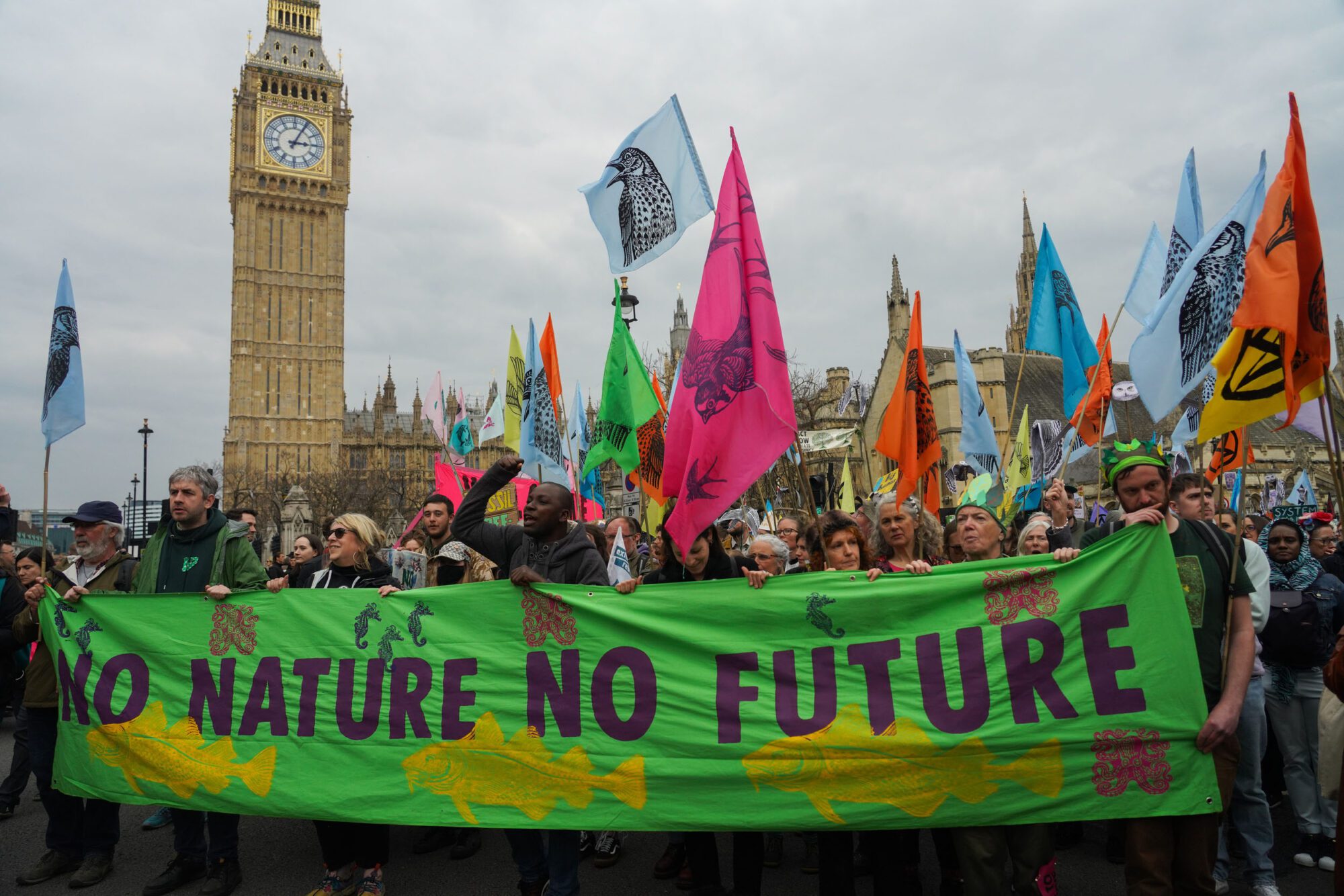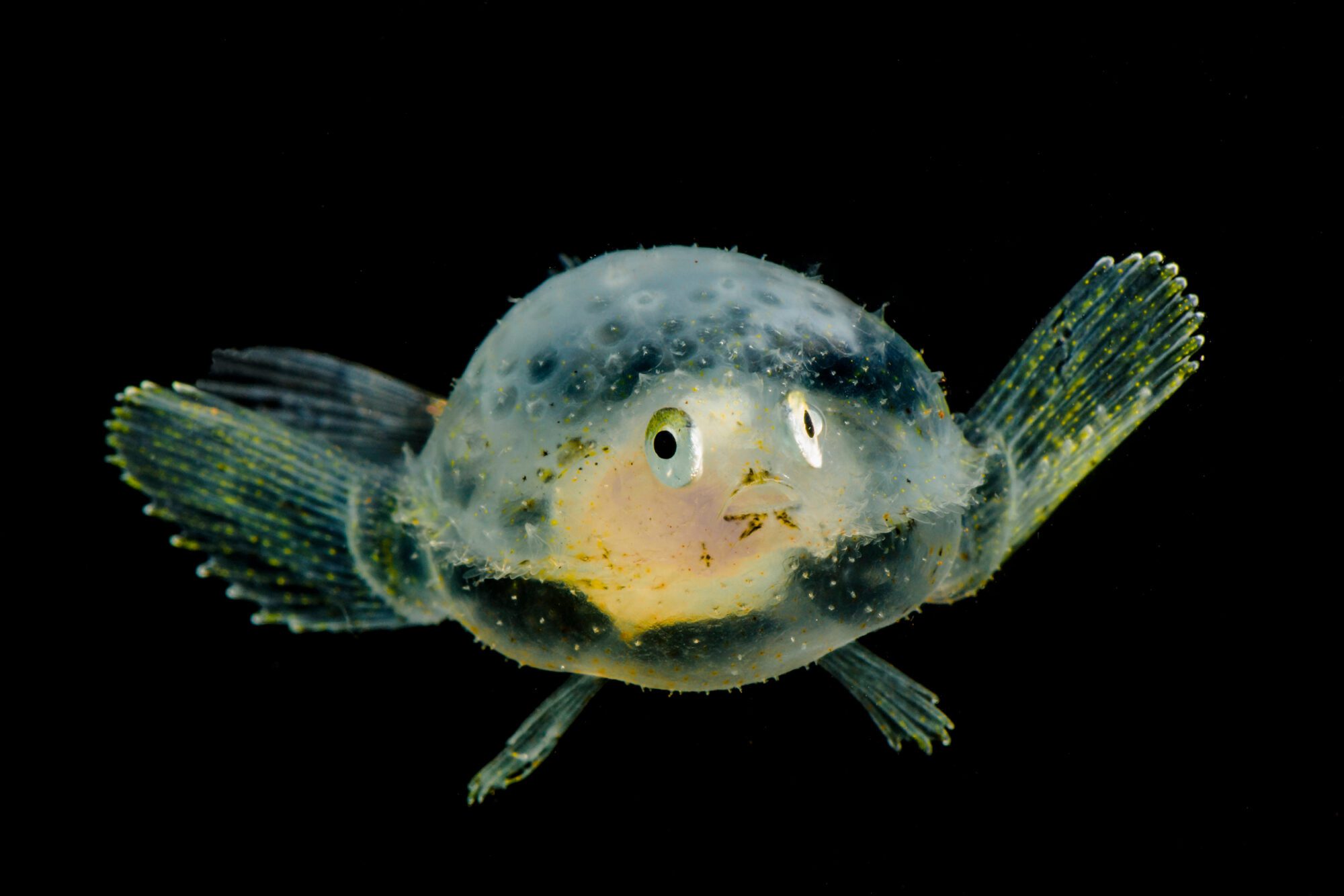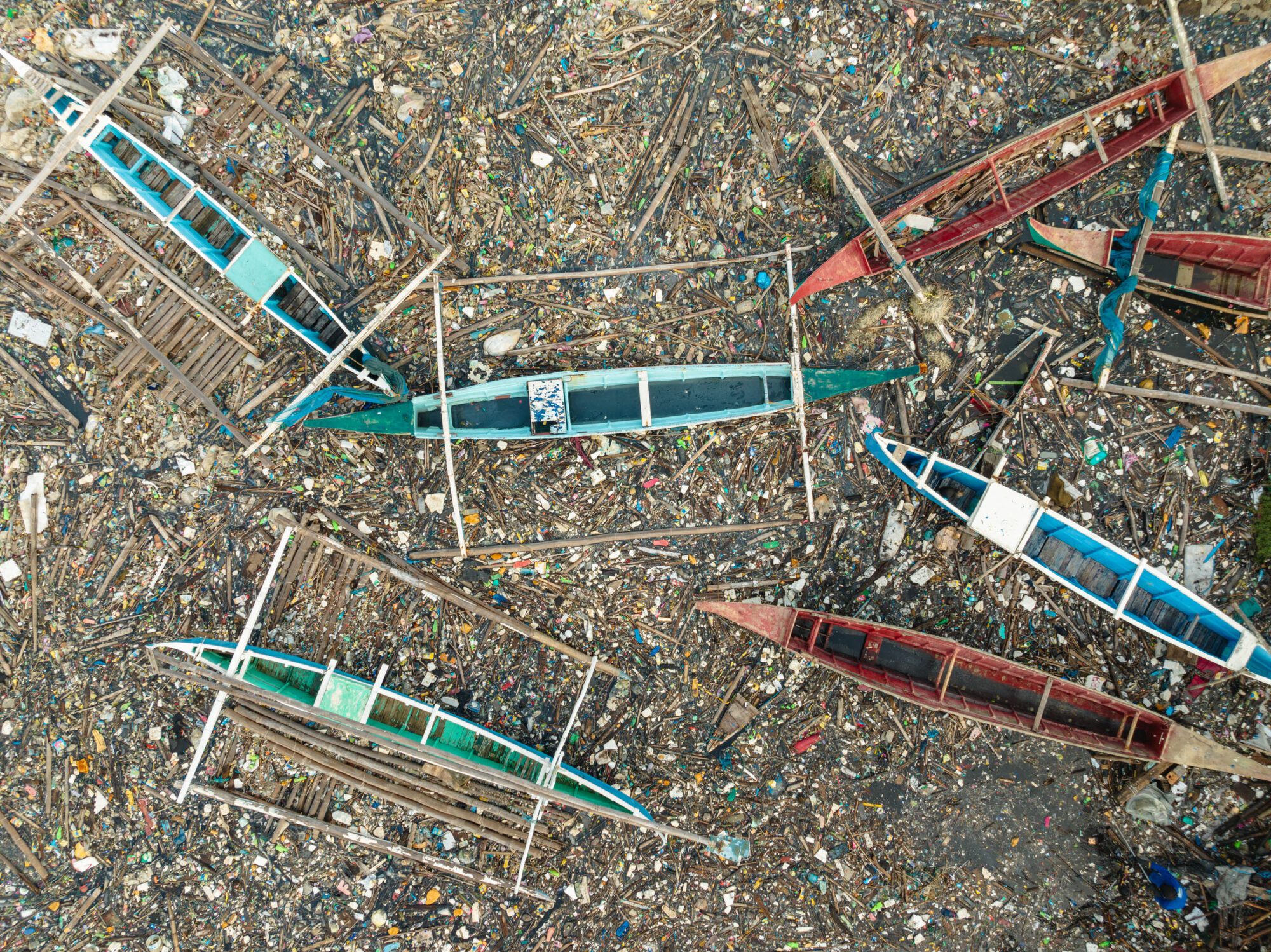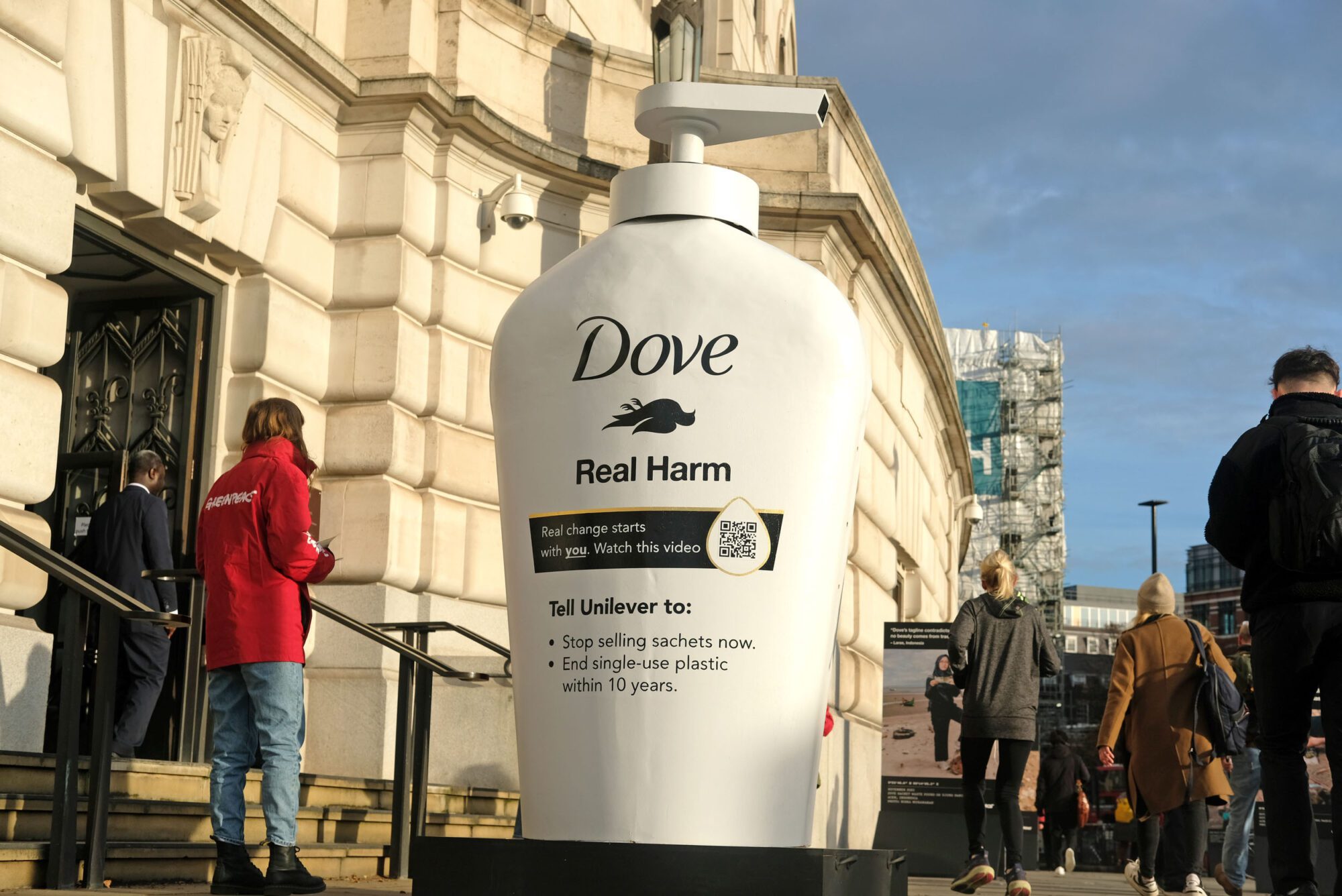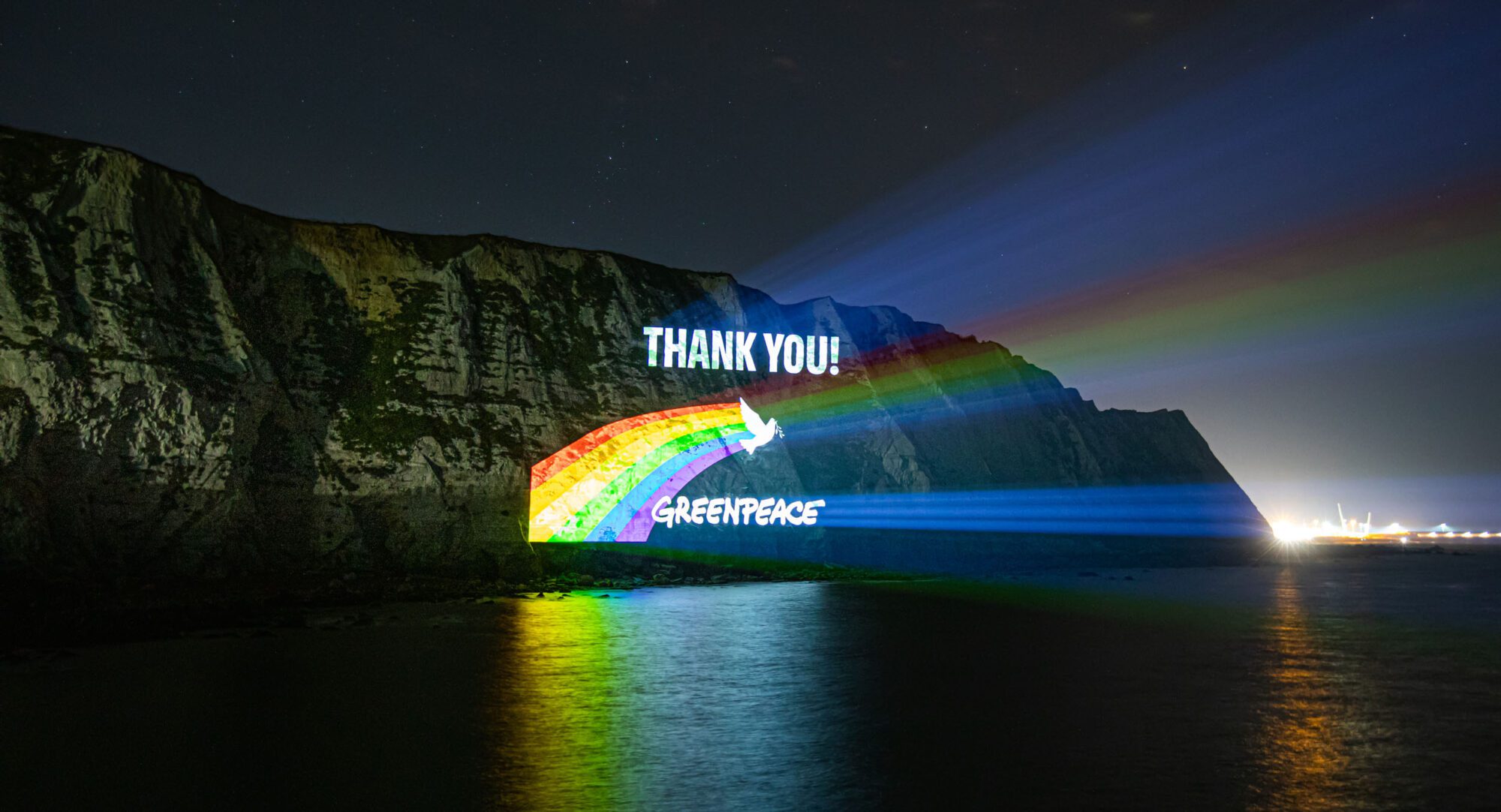In 2023, Greenpeace confronted polluters, protested deep sea mining, and worked to rid our food systems of deforestation.
The pictures featured here represent just a fraction of our activities and noteworthy moments. They fill us with hope for a more green and peaceful future.
And they remind us that only our committed supporters, courageous volunteers, and dedicated activists make any of this possible.
Peaceful protest against fossil fuels at sea
Early this year, activists from the places worst affected by climate change took the fight to major polluter, Shell. Their aim was to highlight Shell’s irresponsible intentions to expand oil and gas drilling.
The activists boarded the White Marlin, transporting equipment for Shell’s oil and gas production in the North Sea. It was the longest ever occupation of a moving oil platform.




